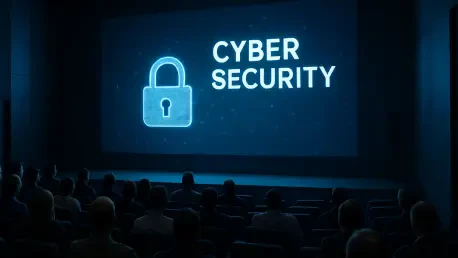In an era where cyber threats to critical infrastructure are escalating at an alarming rate, industrial control systems (ICS) face unprecedented risks, with a reported 34% increase in attacks on operational technology (OT) environments over the past year, making it imperative to address these vulnerabilities. These systems, which power essential services like energy grids and water treatment plants, are becoming prime targets for sophisticated adversaries. This roundup gathers diverse perspectives from cybersecurity experts, industry leaders, and researchers attending the ICS Cybersecurity Conference held from October 27 to 30 at the InterContinental Atlanta Buckhead in Atlanta, Georgia. The aim is to distill key opinions, actionable tips, and strategic reviews to help stakeholders bolster defenses against evolving digital dangers.
Exploring the Landscape of Industrial Cybersecurity
The Urgency of Protecting Critical Infrastructure
The consensus among attendees at the conference underscores a pressing reality: industrial systems like SCADA and programmable logic controllers (PLCs) are no longer isolated from cyber risks due to increasing connectivity. Many professionals highlight that the integration of IT and OT environments has opened new attack vectors, making protection a top priority for national security. This urgency is amplified by the potential for cascading failures that could disrupt entire regions if a single substation or engineering workstation is compromised.
A significant point of discussion revolves around the need for updated frameworks to address these vulnerabilities. Industry voices stress that outdated security protocols often fail to account for modern threats like ransomware tailored for industrial targets. There’s a shared recognition that safeguarding critical infrastructure demands not just technical upgrades but also a shift in organizational mindset toward proactive risk management.
Divergent Views on Balancing Innovation and Security
While most experts agree on the need for robust defenses, opinions differ on how to balance innovation with stringent security measures. Some advocate for rapid adoption of cutting-edge technologies like AI-driven threat detection, arguing that staying ahead of attackers requires agility. However, others caution that untested solutions may introduce unforeseen weaknesses, especially in complex environments like plant control systems.
This debate reveals a tension between progress and caution. A segment of participants emphasizes rigorous vetting of new tools to ensure reliability under high-stakes conditions. Meanwhile, another group pushes for accelerated deployment, suggesting that delays in adopting advanced defenses could leave systems exposed to imminent threats, creating a divide that shapes ongoing discussions.
Key Themes and Tips from the Conference Sessions
Insights on Evolving Cyber Threats
Across over 75 sessions at the event, a recurring theme is the sophistication of cyber threats targeting OT environments. Many cybersecurity specialists note that attackers are increasingly exploiting insider access and supply chain weaknesses to infiltrate industrial systems. Presentations from national labs and large organizations reveal a growing focus on zero-trust architectures as a countermeasure to such tactics.
Differing perspectives emerge on the scalability of these solutions. While some argue that zero-trust models are resource-intensive and challenging to implement in legacy systems, others see them as indispensable for modern defense. This split highlights a broader challenge: tailoring solutions to diverse industrial contexts without compromising on effectiveness or efficiency.
A practical tip shared by several session leaders is the importance of continuous monitoring over static defenses. They suggest integrating real-time analytics to detect anomalies in field devices, a strategy deemed more adaptive to the fluid nature of cyber threats. This approach, though resource-heavy, is often cited as a critical step for staying resilient.
Hands-On Learning as a Game-Changer
Feedback on the conference’s training programs, including five specialized courses like the Cyber Attack Methods for Cyber-Physical Systems, reflects a strong appreciation for experiential learning. Participants value the practical focus of exercises such as the capture-the-flag (CTF) competition organized with ICS Village, which simulates real-world industrial cyber threats. Many note that these activities bridge the gap between theory and application.
However, some attendees point out limitations in addressing organization-specific risks during generalized training. They argue that while simulations build foundational skills, unique operational challenges often require customized strategies. This critique suggests a need for supplementary, tailored preparedness plans beyond standard coursework.
A commonly shared recommendation is for professionals to use these hands-on opportunities as a starting point for building internal drills. Adapting lessons from courses like the ICS/OT Cybersecurity Incident Preparedness Workshop to specific environments is seen as a vital next step. This advice underscores the value of translating conference insights into actionable, localized defenses.
Collaborative Efforts and Industry Perspectives
The Role of Industry Giants in Shaping Solutions
Sponsors such as Cisco, Fortinet, and Honeywell draw significant attention for their contributions to advancing ICS cybersecurity. Many attendees recognize that the backing of such industry leaders accelerates the development of innovative tools and fosters a collaborative spirit. Their involvement is often cited as a driving force behind integrating strategic planning with tactical defenses.
Opinions vary on the influence of corporate agendas in shaping security priorities. Some express concern that sponsor-driven solutions might prioritize marketable products over holistic security needs, while others view their expertise as essential for scaling impactful technologies. This dichotomy fuels debates on how best to align commercial interests with broader protective goals.
A recurring tip from industry representatives is the importance of cross-sector partnerships. They encourage smaller organizations to leverage resources and knowledge shared by larger entities at events like this conference. Such collaboration is seen as a way to level the playing field, ensuring that even resource-constrained entities can access cutting-edge defenses.
Global and Regional Security Challenges
The diverse attendee base brings attention to regional variations in OT security challenges. Participants from different geographies note that while threats like phishing are universal, their impact varies based on local infrastructure maturity and regulatory landscapes. This diversity sparks discussions on the potential for global collaboration to standardize best practices.
Some argue that a one-size-fits-all approach is impractical given these disparities, advocating instead for region-specific frameworks. Others believe that shared platforms for knowledge exchange can help harmonize efforts without erasing local nuances. This tension between uniformity and customization remains a key point of contention.
A practical takeaway from these conversations is the need for international dialogue beyond single events. Many suggest establishing ongoing forums to address region-specific risks while fostering mutual learning. This strategy is viewed as a way to build a more interconnected, resilient global network of industrial cybersecurity professionals.
Reflecting on a Unified Push for OT Resilience
Looking back, the ICS Cybersecurity Conference in Atlanta proved to be a melting pot of ideas, strategies, and practical solutions for fortifying operational technology against cyber threats. The event successfully highlighted the power of uniting diverse stakeholders under a common goal of protecting critical infrastructure. For those who attended, the shared knowledge and hands-on experiences offered a robust foundation for enhancing defenses.
Moving forward, professionals are encouraged to dive deeper into resources like the detailed agenda and session recordings available on the SecurityWeek website. Building on the momentum of this gathering, creating internal incident response plans inspired by workshops and fostering partnerships with industry peers can amplify impact. These steps, grounded in the collaborative spirit of the event, pave the way for a stronger, more adaptive approach to industrial cybersecurity in the face of relentless digital challenges.









